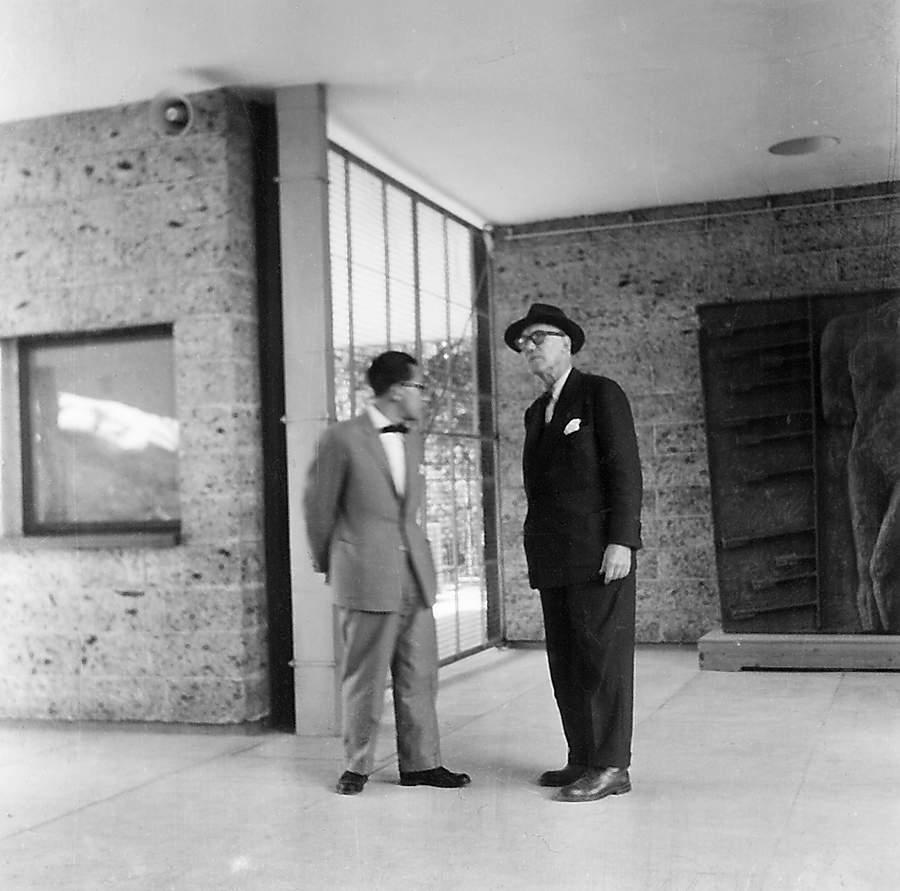Le Corbusier and Japan
Le Corbusier is an architect very familiar to Japanese people. His works constantly struck Japanese hearts, and in return, the east Asian country gave him the full attention that he deserved. His reputation was reassured in recent years with the World Heritage inductions, however his fame and popularity are something that has continued since the late Taisho period.
Le Corbusier was first introduced to Japan by an article written by Kazue Yakushiji in an architectural magazine published August 1923. Yakushiji visited Salon d'automne in Paris in Autumn of 1922 and met with the architect. Yakushiji was fascinated by the presentation of Le Corbusier, and his portrayal of the young Swiss architect left much impression on the Japanese readers.
Another architect, Junpei Nakamura, who was also present at Le Corbusier's presentation at Salon d'automne, states that, “a tremendous deed to the future...passion and force present to arouse the blood of one citizen of an isolated country of Japan (paraphrased from Junpei Nakamura's research on French Modernism published in 1924).” He expressed the influence of young Le Corbusier in a such straightforward manner.
There is no doubt that these two Japanese writers have spread Le Corbusier's fame to the country, but there were also many who followed the architect from early on through imported magazines and literatures. Gaijiro Fujishima, Mamoru Yamada, Togo Murano, Chikatada Kurata, Iwao Yamawaki, and Tetsuro Yoshida are among the number of Japanese architects who visited Le Corbusier's early works in Europe.
By 1929, the Japanese architecture magazine, Kokusaikenchiku, headlined Le Corbusier for two issues in a row. The first, the May issue, posted analysis and discussions by the Japanese contemporaries, while the second, the June issue, presented the translations of the architect's texts and photographs. In addition, firsthand accounts by Japanese architects were published regarding some of Le Corbusier's architecture. This was perhaps the height of the architect's popularity in Japan, receiving praise from the local architects for his philosophy and his actions.
Le Corbusier's pursued rational and practical beauty in simplistic forms. His propaganda of “the Machine for Living” was much easily received by the people of the time.
Another reason why Le Corbusier was well received in Japan was the fact that there were many similarities between his works and traditional Japanese methods. Regarding his architecture of columns and beams, Masami Makino states that “this new Western idea preached by the leading architect has been practiced in Japan for 300 years (paraphrased from Kokusaikenchiku, May 1929).”
This perspective, that prominent Western architect is pursuing traditional Japanese ideas, demonstrated the validity of the Japanese culture. One might say that Le Corbusier was used to promote the greatness of Japanese architecture or even Japan itself.
Before WWII, Masami Makino, Nagatoshi Tsuchihashi, Kunio Mayekawa, and Junzo Sakakura apprenticed at Le Corbusier's atelier, and in the post war era, Takamasa Yoshizaka worked there and brought back much knowledge of the practice to the country. The varying time periods of their stays in Europe tell the ever-transforming state of Le Corbusier and his creative processes.
The National Museum of Western Art was commissioned by the Japanese government, where he tested the concept of “infinite museum.” It was realized by the work of his apprentices Mayekawa, Sakakura, and Yoshizaka.
Many architects in Japan, descendants of Corbusian teachings and those influenced by his Western ideas, led the industry for many years to come. Even today the popularity of Le Corbusier can be attested to the continuing lineage of his teachings.

Le Corbusier who is guided to The museum of modern art kamakura & hayama by Junzo Sakakura Offered by Sakakura Associates architects and engineers
